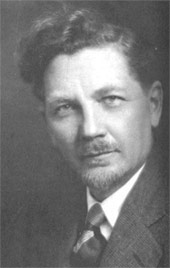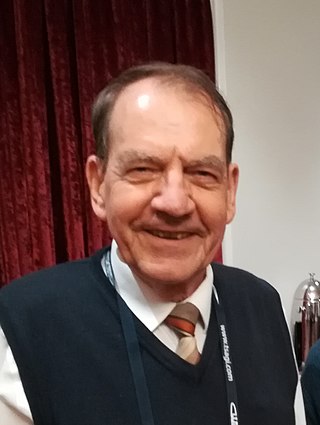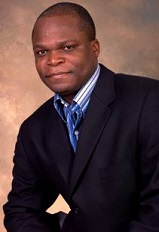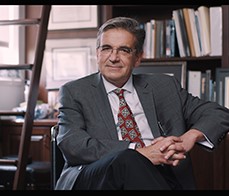Related Research Articles
Engineering physics, or engineering science, refers to the study of the combined disciplines of physics, mathematics, chemistry, biology, and engineering, particularly computer, nuclear, electrical, electronic, aerospace, materials or mechanical engineering. By focusing on the scientific method as a rigorous basis, it seeks ways to apply, design, and develop new solutions in engineering.

The Timoshenko Medal is an award given annually by the American Society of Mechanical Engineers (ASME) to an individual "in recognition of distinguished contributions to the field of applied mechanics."
Applied mechanics is the branch of science concerned with the motion of any substance that can be experienced or perceived by humans without the help of instruments. In short, when mechanics concepts surpass being theoretical and are applied and executed, general mechanics becomes applied mechanics. It is this stark difference that makes applied mechanics an essential understanding for practical everyday life. It has numerous applications in a wide variety of fields and disciplines, including but not limited to structural engineering, astronomy, oceanography, meteorology, hydraulics, mechanical engineering, aerospace engineering, nanotechnology, structural design, earthquake engineering, fluid dynamics, planetary sciences, and other life sciences. Connecting research between numerous disciplines, applied mechanics plays an important role in both science and engineering.
Dr. Ramulu Mamidala is a mechanical engineering professor at University of Washington. Usually goes by the name 'Ram', or 'M.R.', he is recognized for his leadership and outstanding record in promoting collaborative education and research with industry. He is currently the director of Manufacturing Science and Technology Laboratory (MSTL) at Mechanical Engineering Department, University of Washington. He has designed and developed manufacturing methods for a wide range of systems, from the B2 bomber to the Boeing 787. Additionally, in collaboration with industry, he established and directed two interdisciplinary graduate educational programs in engineering and management and a certificate program in composites tooling and manufacturing. His exemplary collaborative efforts motivated working engineers to pursue doctoral studies and he is a leader in using emerging technologies in distance education to reach non-traditional students.

Roddam Narasimha FRS was an Indian aerospace scientist and fluid dynamicist. He was a professor of Aerospace Engineering at the Indian Institute of Science (1962–1999), director of the National Aerospace Laboratories (1984–1993) and the chairman of the Engineering Mechanics Unit at Jawaharlal Nehru Centre for Advanced Scientific Research. He was the DST Year-of-Science Chair Professor at JNCASR and concurrently held the Pratt & Whitney Chair in Science and Engineering at the University of Hyderabad. Narasimha was awarded the Padma Vibhushan, India's second-highest civilian award, in 2013. for his contributions to advance India's aerospace technology.

The Guggenheim Aeronautical Laboratory at the California Institute of Technology (GALCIT), was a research institute created in 1926, at first specializing in aeronautics research. In 1930, Hungarian scientist Theodore von Kármán accepted the directorship of the lab and emigrated to the United States. Under his leadership, work on rockets began there in 1936. GALCIT was the first—and from 1936 to 1940 the only—university-based rocket research center. Based on GALCIT's JATO project at the time, the Jet Propulsion Laboratory was established under a contract with the United States Army in November 1943.

Thomas Joseph Robert Hughes is a Professor of Aerospace Engineering and Engineering Mechanics and currently holds the Computational and Applied Mathematics Chair (III) at the Oden Institute at The University of Texas at Austin. Hughes has been listed as an ISI Highly Cited Author in Engineering by the ISI Web of Knowledge, Thomson Scientific Company.
Satya Atluri was an Indian American engineer, educator, researcher and scientist in aerospace engineering, mechanical engineering and computational sciences, who was a Distinguished Professor Emeritus of Aerospace Engineering at the University of California, Irvine. Since 1966, he made fundamental contributions to the development of finite element methods, boundary element methods, Meshless Local Petrov-Galerkin (MLPG) methods, Fragile Points Methods (FPM), Local Variational Iteration Methods, for general problems of engineering, solid mechanics, fluid dynamics, heat transfer, flexoelectricity, ferromagnetics, gradient and nonlocal theories, nonlinear dynamics, shell theories, micromechanics of materials, structural integrity and damage tolerance, Orbital mechanics, Astrodynamics, digital Twins of Aerospace Systems, etc.

Hans G. Hornung is an emeritus C. L. "Kelly" Johnson Professor of Aeronautics and Director of the Guggenheim Aeronautical Laboratory of the California Institute of Technology (GALCIT). He received his bachelor (1960) and master (1962) degrees from the University of Melbourne and his Ph.D. degree (1965) in Aeronautics from Imperial College, London. He worked in the Aeronautical Research Laboratories, Melbourne, and in the Physics Department of the Australian National University (1967–1980), with a sabbatical year as a Humboldt Fellow in Darmstadt, Germany, 1974. In 1980 he accepted an offer to head the Institute for Experimental Fluid Mechanics of the DLR in Göttingen, Germany. He left Germany in 1987 to serve as the director of GALCIT. During his time at GALCIT he oversaw the construction of three large facilities: the T5 hypervelocity shock tunnel, the John Lucas Adaptive-Wall Wind Tunnel, and a supersonic Ludwieg tube.

Mulalo Doyoyo was a South African engineer, inventor, and professor.

Ares J. Rosakis, Theodore von Kármán Professor of Aeronautics and Professor of Mechanical Engineering at the California Institute of Technology. He was also the fifth Director of the Graduate Aerospace Laboratories, known as (GALCIT), and formerly known as Guggenheim Aeronautical Laboratory, and was the Otis Booth Leadership Chair, of the Division of Engineering and Applied Science.
John J. Tracy is the retired Chief Technology Officer (CTO) of The Boeing Company, the world's largest aerospace company. At Boeing, he held the dual roles of CTO and Senior Vice President of Engineering, Operations & Technology from June 2006 to mid 2016.
The Eshelby Mechanics Award for Young Faculty, launched in 2012, is given annually to rapidly emerging junior faculty who exemplify the creative use and development of mechanics. The intent of the award is to promote the field of mechanics, especially among young researchers, and commemorate the memory of Professor John Douglas Eshelby. While interdisciplinary work that bridges mechanics with physics, chemistry, biology and other disciplines is encouraged, the ideal awardee will demonstrate clear inspiration from mechanics in his or her research. Awardees receive a $1,500 cash prize and a commemorative plaque. The awardees are formally recognized at the annual Applied Mechanics Division banquet at the ASME-IMECE meeting.
Ramarathnam Narasimhan is an Indian materials engineer and a professor at the Department of Mechanical Engineering of the Indian Institute of Science. He is known for his pioneering researches on fracture mechanics and is an elected fellow of the Indian Academy of Sciences, Indian National Science Academy and the Indian National Academy of Engineering. The Council of Scientific and Industrial Research, the apex agency of the Government of India for scientific research, awarded him the Shanti Swarup Bhatnagar Prize for Science and Technology, one of the highest Indian science awards for his contributions to Engineering Sciences in 1999.
Suresh K Sitaraman is the Regents' Professor and Morris M. Bryan, Jr. Professor of the George W. Woodruff School of Mechanical Engineering, Georgia Institute of Technology, Atlanta, USA.

The National Institute of Technology Tiruchirappalli is a national research deemed university near the city of Tiruchirappalli in Tamil Nadu, India. It was founded as Regional Engineering College Tiruchirappalli in 1964 by the governments of India and Tamil Nadu under the affiliation of the University of Madras. The college was granted deemed university status in 2003 with the approval of the University Grants Commission (UGC), the All India Council for Technical Education (AICTE), and the Government of India and renamed the National Institute of Technology Tiruchirappalli.
Samantha (Sam) Hayes Daly is an American mechanical engineer whose research topics include the failure analysis of novel materials including shape-memory alloys and ceramic matrix composites, and the calibration of the scanning electron microscopes used in this analysis. She is a professor of mechanical engineering at the University of California, Santa Barbara.
References
- ↑ "Guruswami Ravichandran" (PDF). Archived from the original (PDF) on 29 March 2017. Retrieved 28 March 2017.
- ↑ "G. Ravichandran - Home". ravi.caltech.edu. Retrieved 24 March 2017.
- ↑ "Caltech Aerospace (GALCIT) | Director". www.galcit.caltech.edu. Retrieved 26 March 2017.
- ↑ "Guruswami Profile" (PDF). Caltech. Archived from the original (PDF) on 14 July 2015. Retrieved 26 March 2017.
- ↑ "Society for Experimental Mechanics". sem.org. Retrieved 22 December 2021.
- ↑ "Caltech Division of Engineering and Applied Science". www.eas.caltech.edu. Retrieved 24 March 2017.
- ↑ "DAA 2008". NITT.